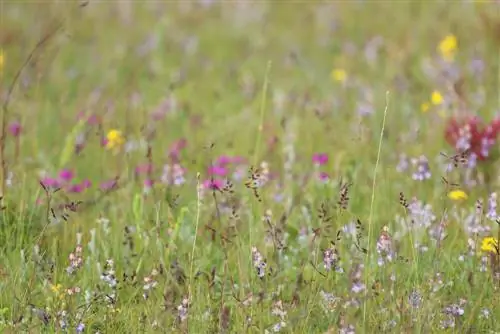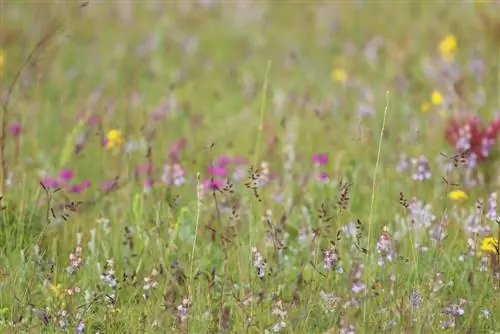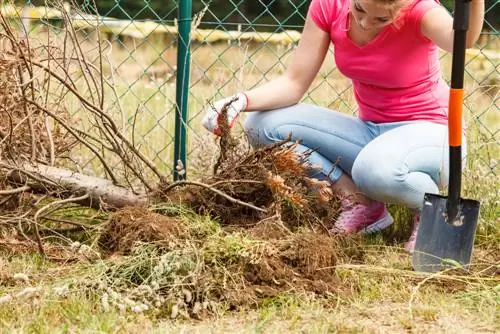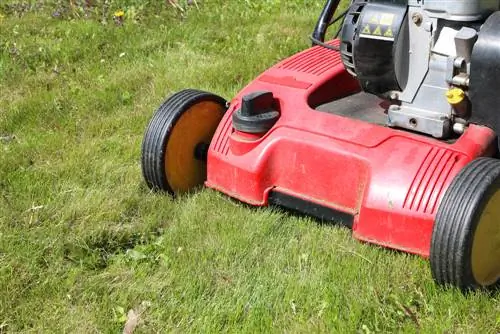- Author admin [email protected].
- Public 2023-12-16 16:46.
- Last modified 2025-01-23 11:21.
Digging up the soil disrupts the valuable soil structure. Digging up is not always the best method. There are alternatives for developing a species-rich flower meadow.

How do I create a flower meadow without digging?
To create a flower meadow without digging, reduce maintenance measures, cover the area with foil or plant early flower meadow species. As a result, a species-rich, natural meadow develops.
How to create a flower meadow without digging:
- Reduce care measures
- Cover the surface with foil
- plant early plants
Reduce care measures
Reduce the mowing times for your lawn so that the green area naturally develops into a colorful flower meadow. It is sufficient if you mow the area once or twice a year. Avoid further care measures such as fertilizing and mulching. This causes the soil to slowly become less nutrient-poor. Over time, typical herbs and flowers that grow in the area around the garden settle in the meadow.
If your garden is on the outskirts of town, seeds will create a species-rich meadow. A garden in the city is more isolated. Here you need more patience until the lawn has changed naturally.
Cover the surface with foil
Smaller areas in the lawn with seeds act as islands of flowers from which the plants automatically spread across the lawn over the years. Cover the area that you want to convert into a flower meadow with black foil (€10.00 on Amazon). The film is weighted down with stones. After about three to four weeks, the grass under the film died.
Use a rake to roughen the area. Then sow the desired seeds on the area. Mix the seeds with sand or shavings to ensure an even distribution of seeds over the area. Roll the soil so that the seeds come into contact with the substrate and are not covered by the soil. The seeds need light to germinate.
If you sow seeds in May, you must ensure adequate watering. Keep the area evenly moist for the next two to three weeks. When sowing in autumn in September or sowing early in March, rainfall combined with lower temperatures are sufficient to ensure optimal water balance. In the summer months, a shading fleece can help on smaller areas. It prevents excessive water evaporation.
Spread early plants
Choose at least 15 different species that grow in flower meadows. The seeds are grown in a pot before being planted in the lawn. Plant the mature flower meadow species in small groups consisting of three to five identical plant species. Distribute the groups across the entire lawn. The pre-grown plants have a growth advantage over the competitive grasses so that they can assert themselves outdoors.
Special wild herb mats already contain seeds from meadow flower species or pre-grown plants. They are placed on a lawn, pressed down and moistened. The fleece prevents weeds from growing. The species develop flowers and fruits in the first year, so they spread quickly over the area.






